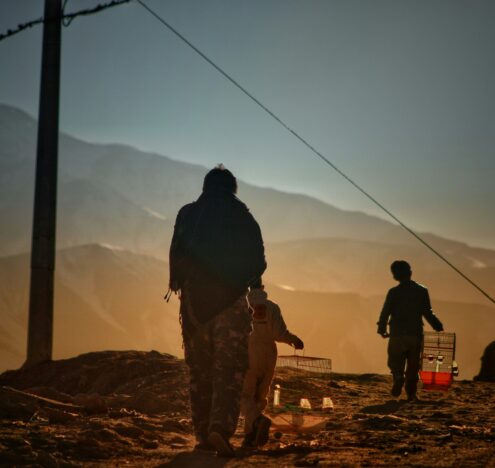Yesterday, the Bulletin of the Atomic Scientists, a group of experts on nuclear weapons and climate change, announced that its Doomsday Clock would remain at 100 seconds to midnight. This means for the second year in a row, the Clock will be closer than ever to the “midnight” of a disaster that destroys human civilization.
To many, it might seem like a strange moment for a US-based organization to be sounding the alarm on an existential threat so intimately connected with former President Donald Trump’s personal volatility. After four years of trading extravagant threats with North Korea, abandoning the Paris Accords, the Intermediate-Range Nuclear Forces (INF) Treaty, and a host of other key agreements and regulations, the simple fact that President Joe Biden is now at the helm of the US government might persuade the expert community that we’ve stepped back from the brink — at least a little.
But at this key moment, the Bulletin’s announcement is an opportunity to realize these threats are much bigger than Trump.
The Trump administration demonstrated over and over that US presidential power is massively inflated. This is especially, almost parodically true when it comes to nuclear weapons: the US president is the only person in the whole country with the authority to order a nuclear strike. And while there are some limits to this power, no one can override the president.
That means, more than in any other issue area, by electing Biden, the United States has taken a real step to reduce the immediate likelihood that nuclear weapons will be used. But the fact that the clock has not moved as a result is a good indication that simply choosing a competent executive to steward the country’s thousands of nuclear weapons is not enough to substantially address the very real threats of pandemics like COVID-19, climate catastrophe, and nuclear weapons.
WHOSE IDEA WAS THIS, ANYWAY?
The final days of the Trump administration saw a rare moment of public engagement with the realities of US nuclear weapons policy. Many speculated about a savior in the chain of command, a heroic individual who would surely go against their training and professional incentives and refuse to carry out a nuclear strike order. Surely, this can’t be the system we’ve lived with all these years, these authors seemed to be asking. Who agreed to this?
The final days of the Trump administration saw a rare moment of public engagement with the realities of US nuclear weapons policy. Many speculated about a savior in the chain of command, a heroic individual who would surely go against their training and professional incentives and refuse to carry out a nuclear strike order.
From the beginning of the nuclear age, these weapons have been shrouded in secrecy, with decisions about deployment and use reserved for the highest leadership while their most basic details remain mysterious to the people whose taxes fund their development, and who will lose everything if they are used. Their continued existence is a challenge to the very concept of democracy — one person can, at any moment, effectively decide to kill a huge portion of the world’s population and render vast areas unlivable, potentially forever.
THE REAL OPPORTUNITY
The Biden administration has already taken action on extending the New Strategic Arms Reduction Treaty (START), the last remaining treaty limiting US and Russian nuclear arsenals. But there’s a real opportunity here to go further, taking bold action on the two biggest existential threats facing the United States: climate change and nuclear weapons. Making the most of this moment can save lives and livelihoods from these preventable, human-made disasters waiting to happen.
On nuclear weapons, the administration has a few easy options to reduce immediate risks well within its reach. A No First Use policy, which would state unequivocally that the United States will not use nuclear weapons first in a conflict and enact changes to US nuclear force structure, would drastically reduce the likelihood of a US nuclear launch in response to a false alarm — a real possibility when only a few minutes are allotted to make the decision to launch a nuclear weapon. And now that the New START is on track for renewal, the administration could take the next step by negotiating a follow-on treaty that makes further cuts to both US and Russian nuclear arsenals.
On the climate side, the COVID pandemic and resulting economic crisis has created an opportunity for a federal-led jobs program focused on infrastructure renewal, which the United States desperately needs. While Biden does not support a Green New Deal, he can still set a course for a more ambitious climate policy and head off the worst effects of a warming planet. And, for those worried about how the United States will pay for the massive federal spending needed to soften the blow of climate catastrophe, the bloated US nuclear weapons budget is a great place to start.
These projects are much bigger than one person. But today, the US presidency is well-positioned to take the necessary steps to turn back the Doomsday Clock, pull the world back from the brink of destruction, and build a new and more hopeful future. Everyone stands to lose from climate disaster and nuclear weapons use — it’s up to us to make sure lasting, transformational change stays on the agenda.
Emma Claire Foley is a program associate at Global Zero.





















